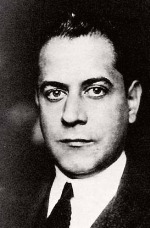It is important to recognise the past champions who have elevated chess standards to where they are today.
KIESERITZKY, Staunton, Capablanca … do any of these names ring a bell? No? You are not alone.
About two years ago, I was visiting one of the chess academies in the Klang Valley with some friends and we saw the walls lined with posters of former world chess champions. We reached a consensus that the youth of today would probably not be able to recognise the champions of yesteryears.
You may think that it’s unimportant to know all this old stuff but I would disagree with you. I would say that anyone who doesn’t know chess history is missing out on a lot of colour, as well as chess.
All the personalities of the past have actually shaped the chess we play today. Even now, great international-level players continue to draw their inspiration from those in the past. I don’t see why we, at the grassroots level, cannot appreciate them too.
José Raúl Capablanca
 Even back in 1921, Cuban chess legend José Raúl Capablanca did not fit the stereotype of a chess player.
Even back in 1921, Cuban chess legend José Raúl Capablanca did not fit the stereotype of a chess player.
Take Capablanca, for example. He was the world champion from 1921 until 1927. He was very formidable at the chess board and had an aura of invincibility even before he became world champion.
It was said that in his first nine years of international play from 1909 to 1918, he played 155 games with 100 wins, 46 draws and only four losses. In the next 20 years, he won 191 games and lost 24. From 1914 to 1924, he played 126 games and lost only four.
Then, at the 1924 New York tournament, one of the great tournaments of the past, he lost to Richard Reti. Everyone was shocked. So unexpected was the loss that the New York Times reported the event with the headline: Capablanca Loses 1st Game Since 1914.
In his entire playing career, he played more than 700 games and lost only 35. No wonder he was dubbed “The Chess Machine” by his admirers.
Capablanca was suave, he was a ladies’ man, and he enjoyed life. Certainly, this chess player from Cuba was unlike the stereotype of his chess contemporaries.
Back to the NYT. In 1921, after Capablanca had beaten Emmanuel Lasker for the championship title, the newspaper had this to say:
“In appearance, the new champion is utterly unlike the popular conception of a chess player. The beard, the spectacles, the furrowed brow, the rounded shoulders, the clouds of smoke, the careless attire – all these are absent. The new champion looks more like a successful businessman than a chess player.
“Everything interests him. Except when playing or preparing for play, he forgets chess and enjoys life as any healthy, lively-minded young man of 32 should who can afford it.”
That’s Capablanca for you. It wasn’t until the heydays of Boris Spassky in the early 1970s and Gary Kasparov in the 1990s that chess fashion became stylish again. So you see, Capablanca was way ahead of his time, both on and off the chess board.
Howard Staunton
Howard Staunton was an English chess master of the 19th century who lived a notorious life. Almost every adjective had been used to describe him, including “irascible”, “unlovable”, “stubborn”, “vengeful”, “disliked” and “admired”, yet Staunton was recognised as a player of high principles despite his low dealings.
At a time when there wasn’t yet a world champion, he called himself one. But it was generally accepted that for about 15 years, Staunton was probably the strongest player in Europe. He admired Shakespeare, wrote chess books and was the editor of his own chess magazine.
He also organised the great London tournament of 1851 in which almost all the important players in Europe took part. This was a knock-out tournament as opposed to a round-robin tournament. Staunton himself took part in it but was knocked out in the third round. After the tournament, he gradually played less and immersed himself in his Shakespearean research. During his day, he was regarded as a great Shakespearean scholar.
Do you know what I would consider to be Staunton’s greatest contribution to chess? Just lift up those chess pieces before you. Hold them in the palm of your hand. Feel the weight. Admire the shape of the pieces. Yes, those are the Staunton chess pieces you hold. He designed them and until this day, we are still using them at all levels of chess competitions, from the world championship level to club tournaments. That was Staunton’s greatest contribution to the game.
Lionel Kieseritzky
Kieseritzky lived during the same period as Staunton. Russian by birth, Kieseritzky lived most of his life in Paris. He wasn’t a particularly strong player but has been credited with beating a few notable players in his time. His greatest claim to fame was not a game he won but instead, a game in which he was at the receiving end of a great attack. If you have heard about The Immortal Game played in 1851, that’s the one I’m referring to.
Sadly, Kieseritzky died penniless. A hat was passed around to collect money for his funeral but nothing was raised. As a result, the poor guy was buried in a pauper’s grave.
I shall line up more tales of the great masters of the past. Until next week, enjoy your next game of chess but do think about the 1,400 years that have passed since the game was invented.
(This article first appeared in The Star on 11 July 2008)

hiii….happy know with you from indonesian.good article.thanks